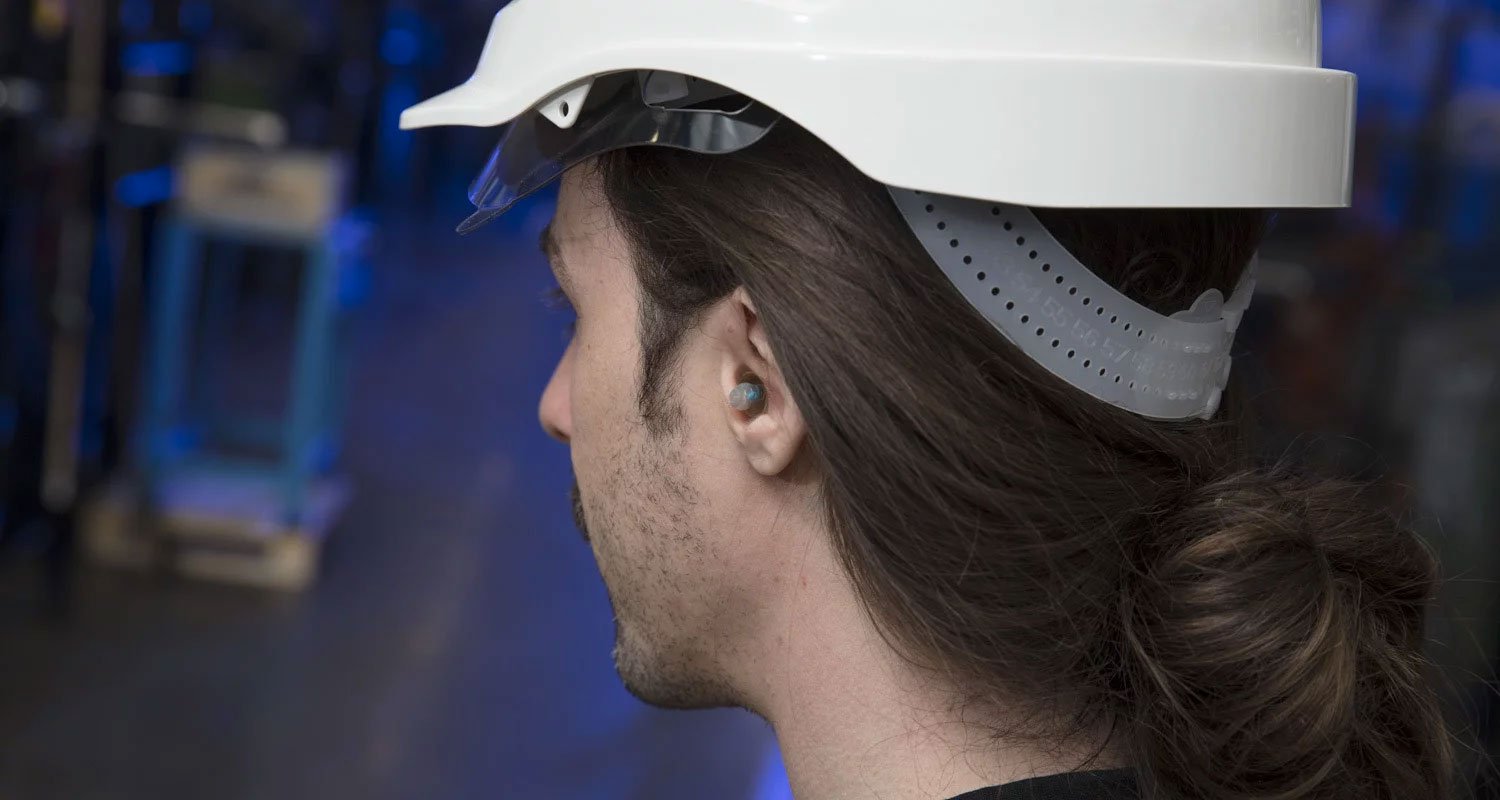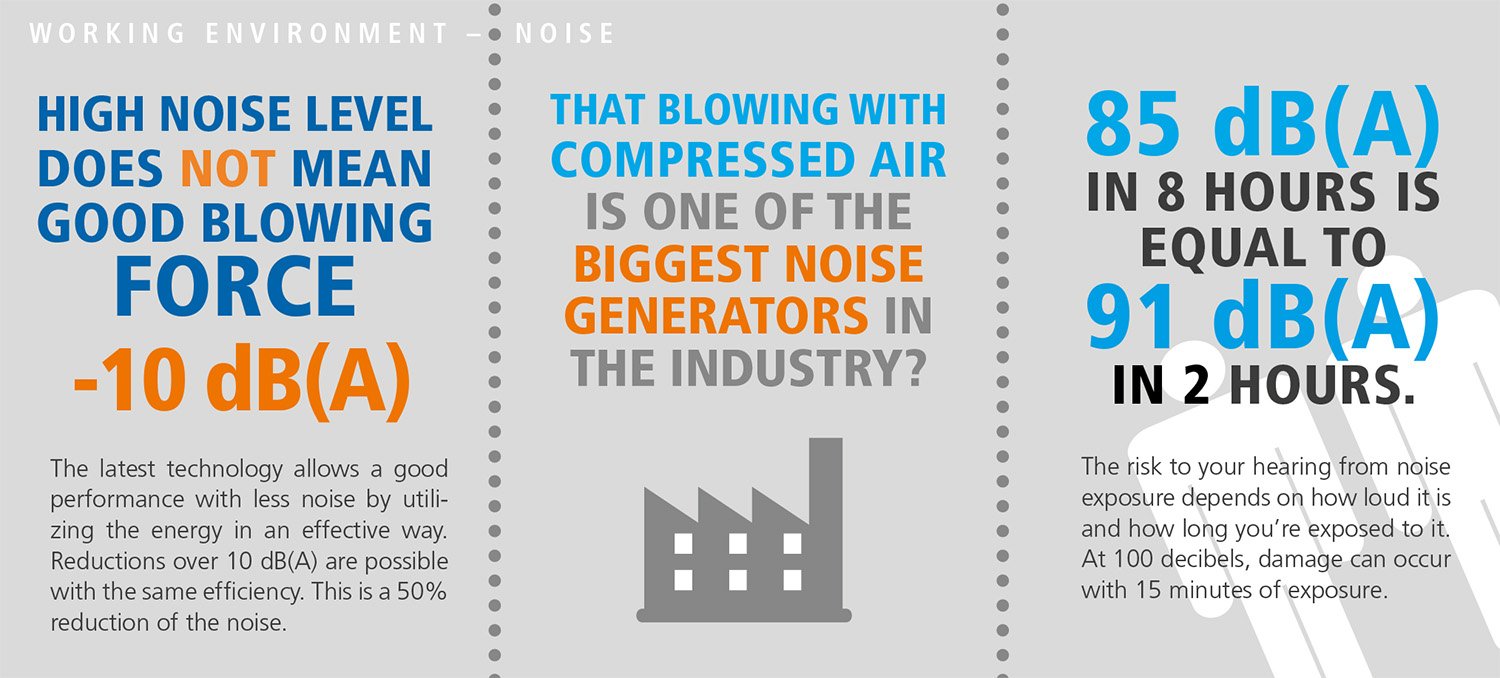A version of this article was first published on silvent.com
One of the most common working environment issues is noise. How the employee is affected by the noise depends on the sound level and the time the employee is exposed to the sound. Noise effects the employees’ mental wellbeing and can, at its worst case, lead to physical permanent damage. Read more about how employees are affected by noise here.
One of the reasons for noise in industry is blowing with compressed air. It is important to use the correct equipment when blowing with compressed air. This is particularly important when manually blowing with an air blow gun, since the operator is closer to the source of noise. Today, there are air blow guns specially engineered to combine a quiet and efficient blowing.
Here are three truths about noise in industry when blowing with compressed air:
1. Did you know that a high sound level does not mean a good blowing force?
It is common to associate a high sound level with a high blowing force. However, with new technology it is possible to combine a low sound level with a strong, efficient blowing force. In most cases, when blowing with compressed air, it is possible to lower the sound level by 10 decibels, which the ear perceives as a halving of the sound level. This makes a big difference when it comes to the risk of injuries, and in many cases, it is even possible to lower the sound level below the statutory limit. Read more about the sound laws or how it is possible to combine a lower sound level with an efficient blowing force.
2. Did you know that blowing with compressed air is one of the biggest noise sources in industry?
Air guns and air nozzles often generate sound levels above the accepted limit for an 8-hour working day. Noise occurs when the compressed air expands out of the compressed air system and creates turbulence. To counteract the noise from blowing with compressed air the turbulence has to be controlled and minimized. Read more about how industry noise, generated by blowing with compressed air, can be decreased.
3. Did you know that 85 dB(A) in 8 hours is as much as 91 dB(A) in two hours?
The risk of hearing damage depends on two factors; the sound level and the amount of time an employee is exposed to the sound. This means that a higher noise level leads to a shorter exposure time. Therefore, we often talk about exchange rate. In the US the maximum sound level for an 8 hour day is 90 dB(A). The approved exposure time is then cut in half for every 5 dB(A) the sound level exceeds the maximum sound level. This means that if the sound level is 100 dB(A) during an 8 hour working day, the workers are only allowed to work in the sound for 2 hours.
Find out more about blowing with compressed air nozzles




